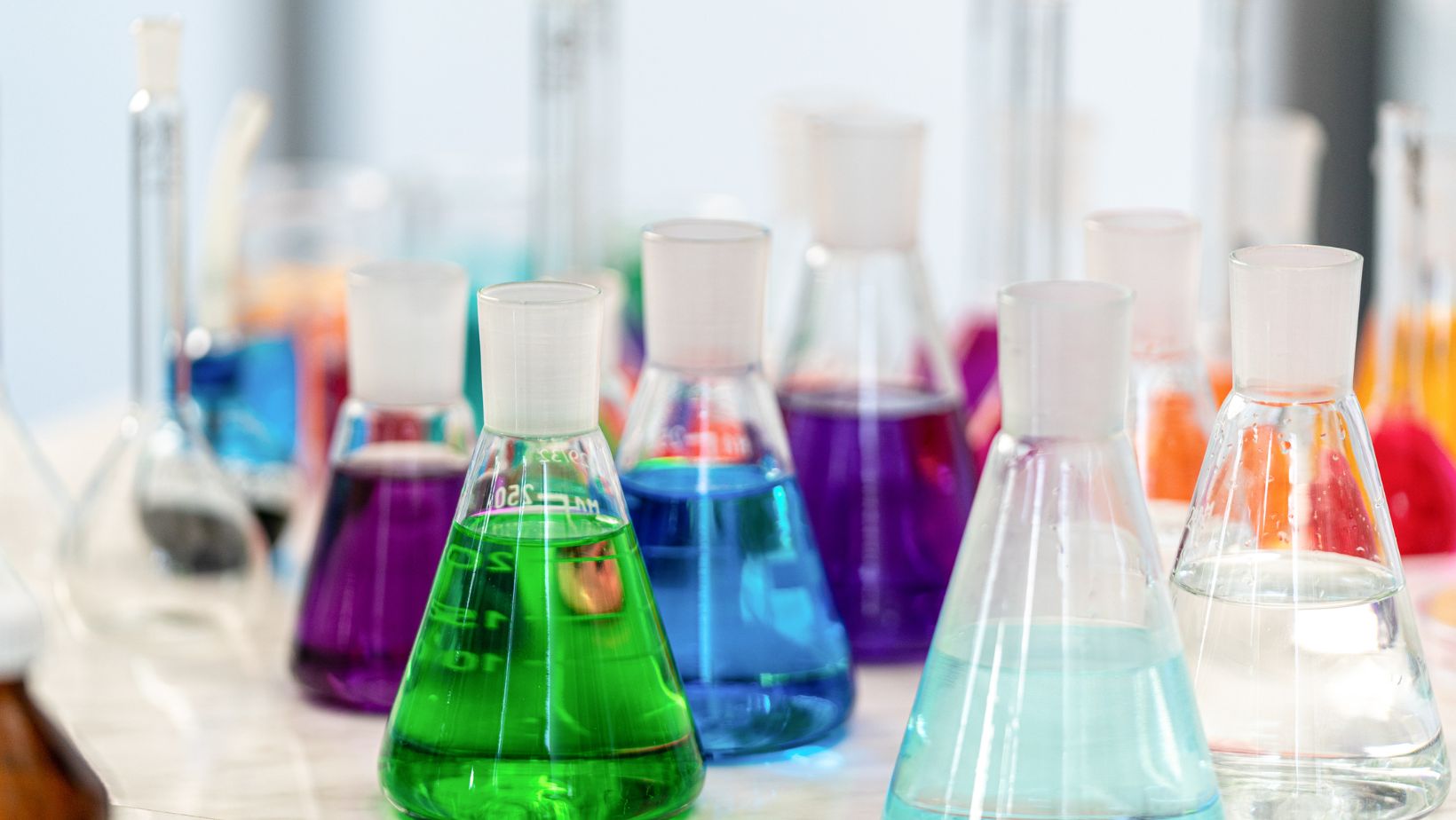Have you ever wondered about the unseen ingredients in your favorite products? From waterproof clothes to non-stick cookware, per- and poly-fluoroalkyl substances (PFAS) might lurk unnoticed. These persistent compounds have recently sparked concern due to their non-biodegradable nature and potential health risks.
 A groundbreaking study by the Agency for Toxic Substances and Disease Registry revealed a troubling fact. Virtually every person in the United States carries detectable levels of PFAS in their blood.
A groundbreaking study by the Agency for Toxic Substances and Disease Registry revealed a troubling fact. Virtually every person in the United States carries detectable levels of PFAS in their blood.
What makes this discovery particularly alarming is the tenacity of these substances. PFAS can linger in our environment for generations, contaminating soil and water sources. Over time, they infiltrate our food supply.
The PFAS problem has grown too big to ignore. Now, people and governments are waking up to the danger.
In this article, we’ll look at how people are fighting back against PFAS in their everyday lives.
Understanding the Origins of PFAS Contamination
PFAS, the persistent chemical chameleons, have infiltrated our world through myriad channels. The Natural Resources Defense Council warns that common household items, from stain repellents to non-stick cookware, may harbor these persistent chemicals.
These synthetic marvels, engineered for their water and oil-repelling prowess, have become omnipresent in modern life.
Yet, one source stands out as particularly problematic: Aqueous Film-Forming Foam (AFFF). This fire suppressant, a staple in firefighting for years, has left an indelible mark on our environment.
The U.S. Department of Defense, as the nation’s primary consumer of AFFF, faces a complex challenge. Their records paint a sobering picture.
Approximately 80% of their active and former installations require extensive environmental remediation. In some locations, PFAS levels have skyrocketed to over 3,000 times the agency’s safety threshold.
TorHoerman Law states that this widespread contamination has not gone unnoticed. Veterans, once exposed to these foams, now grapple with life-threatening health conditions. Even now, families who unknowingly consume tainted water at these sites face similar risks. The situation has sparked legal action, with many veterans seeking justice through AFFF lawsuits.
Despite the mounting evidence and the severity of their injuries, many veterans are facing delays and obstacles in receiving their AFFF lawsuit settlement amounts. Undeterred, these brave individuals are fighting to ensure their voices are heard and their needs are met, even in the face of declining health.
Addressing this invisible threat requires a multifaceted approach and a collective commitment to change.
Conscious Consumer Vigilance
The PFAS crisis has birthed a generation of ingredient-savvy shoppers. Armed with newfound awareness, consumers now scrutinize food and product labels with detective-like precision.
Our food isn’t immune. Seafood and dairy products can harbor these chemicals due to environmental contamination and bioaccumulation.
Food Safety Magazine states that food packaging is slowly shifting to more PFAS-free alternatives across all consumer goods. From initial suppliers to retail giants, and even waste management firms, every player is prioritizing PFAS reduction. This concerted effort aims to enhance product value while addressing environmental concerns.
In the world of cosmetics, PFAS often masquerades under complex nomenclature. WebMD alerts us to watch for terms like polytetrafluoroethylene (PTFE), perfluorooctyl triethoxysilane, and perfluorononyl dimethicone.
 Manufacturers now face mounting pressure to reformulate their offerings, prioritizing safety and transparency. This shift isn’t just a trend. It’s a consumer-driven revolution reshaping the marketplace.
Manufacturers now face mounting pressure to reformulate their offerings, prioritizing safety and transparency. This shift isn’t just a trend. It’s a consumer-driven revolution reshaping the marketplace.
As we navigate this new landscape of conscious consumption, our purchasing decisions become powerful tools in the fight against PFAS proliferation. The message is clear: informed consumers can drive meaningful change.
Embracing Nature’s Alternatives
The PFAS scare has ignited a seismic shift in consumer preferences, propelling natural ingredients to the forefront of personal care. Shoppers now gravitate towards plant-based, organic, and eco-conscious options, reshaping market dynamics.
This paradigm shift has elevated time-honored ingredients like aloe vera, and aromatic essential oils to newfound prominence. Also, certifications from reputable organizations such as Green Seal and EPA Safer Choice have become crucial benchmarks for PFAS-free household items.
In this quest for safer alternatives, the Environmental Working Group’s Skin Deep database has emerged as an invaluable resource. This comprehensive tool empowers consumers to make informed choices, effectively identifying PFAS-free options.
These collective efforts signify a broader societal shift towards reducing PFAS exposure. They foster a safer, more sustainable future amidst ongoing environmental challenges.
Safeguarding Your Water
The specter of PFAS lurking in our drinking water has jolted many into action. A groundbreaking New York Times exposé unveiled alarming concentrations of these chemicals in local water supplies. This isn’t an isolated incident. ScienceDirect’s comprehensive study revealed a chilling fact. Over 40% of national tap water samples contain at least one PFAS toxin.
This revelation has catalyzed a water filtration revolution. Households are now exploring various purification methods to combat these persistent pollutants.
Pitcher filters, employing activated carbon or ion exchange resins, offer an accessible first line of defense. Faucet attachments, integrating advanced filtration technologies, provide on-demand purified water.
Faucet-mounted filters, utilizing activated carbon or reverse osmosis membranes, offer a potent defense against PFAS. The Minnesota Department of Health confirms their effectiveness in removing these contaminants. This direct water treatment at the point of use ensures immediate protection for households.
However, it’s crucial to note that while these solutions represent significant progress, the battle against PFAS in our water supply is far from over.
FAQs
How does PFAS affect wildlife and ecosystems?
PFAS contamination impacts aquatic ecosystems significantly. These chemicals accumulate in fish and other wildlife, disrupting reproduction and growth. Bioaccumulation through the food chain affects predatory species, altering entire ecosystem dynamics. Long-term environmental persistence exacerbates these effects.
Are there any ongoing efforts to develop PFAS-free alternatives for industrial applications?
Focus areas include fire-fighting foams, water-repellent textiles, and food packaging materials. These efforts aim to create equally effective but environmentally benign substitutes, addressing both performance requirements and safety concerns.
What challenges do researchers face in studying the long-term effects of PFAS exposure?
Researchers encounter difficulties in isolating PFAS effects due to widespread exposure and the chemicals’ persistence. Ethical constraints limit human studies, while animal studies may not translate to human health impacts. The variety of PFAS compounds further complicates comprehensive research.
The pervasive nature of PFAS contamination represents a global environmental and health challenge. As awareness grows, so does the imperative for collective action. From individual choices to industrial innovations and policy reforms, addressing the PFAS crisis demands a multifaceted approach.
This paradigm shift in our relationship with synthetic chemicals may well redefine our approach to environmental stewardship for generations to come.



